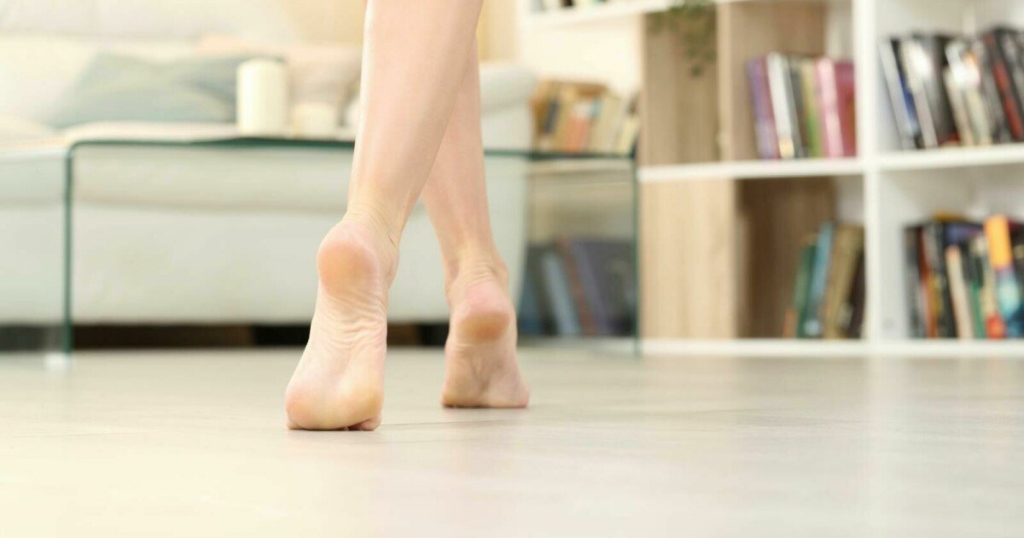Stand on one leg and close your eyes while brushing your teeth. It’s probably a balance exercise you’ve heard of? But there are better ways to practice the skill! Walking on tiptoes, for example.
BBalance in movement must be trained, because that’s when we need it.
If we train to keep our balance on one leg, we’re perfectly good at standing on one leg, but it’s something we rarely need in everyday life, says Eva Ekval Hansson, professor of physical therapy and one of Sweden’s leading experts on dizziness. and balance.
So, unless you plan on breaking like a flamingo, there is another, more effective balance training that you should focus on to get results.
afraid of falling
Practicing balance is one of the best things you can do to maintain a high quality of life in old age.
Bad balance often constrains the whole life. Even if you don’t fall, you often fear falling and limit your life. You stay home and become more lethargic, which in turn causes you to sleep worse and become depressed more easily. To live a good life in old age, balance is important.
Good balance prolongs life
Practice your balance at home
All balance exercises should take place in a safe and secure environment. Start at home and position yourself so you don’t fall or hit yourself.
Eva’s first tip is simple, but it can be hard to master. Therefore, it is a good idea to stand safely in a corner with a chair facing back in front of you.
– It’s a good starting point. If you lose your balance, you can then lean against the corner of the wall and hold the back of the chair in front of you.
Stand with your feet close together. Then close your eyes and shake your head vigorously.
This exercise challenges the inner ear. It can be uncomfortable if you feel dizzy, but it is not dangerous. Repeat this exercise from time to time and you will notice that it becomes less difficult over time.
When it is no longer difficult, do the same while sitting and getting up from the couch.
– If you feel like you’re falling, just sit on the couch and let your balance recover. It is also a safe and secure environment where it is harmless to challenge the balance.
Exercise balance in movement
Balance is movement. Therefore, we must also train balance in movement. The following Eva tip is also easy to do at home.
Walking on tiptoe. Then move on to walking on your heels. Do this every morning and evening while brushing your teeth, for example. Also try tipping a line, for example a joint in parquet.
– If the situation is very unstable from the start, walk along the wall and drag your fingertips along the wall. Then the feel of the skin helps maintain balance, and you can get a good grip on the wall if you’re about to fall.
Rapid eye and head movements also challenge balance. So when you feel safe and secure walking on your toes, advance the exercise by quickly looking from one direction to the other at the same time.
Matilda lives with a cyst on her stomach: ‘You saved my life’
Squats challenge balance
Stability in the toe and ankle joints is also important for maintaining good balance. Performing squats is a good exercise for that. Or bend forward and stand up again.
Think about any moments of balance that are difficult for you, and practice them. Only by practicing what is difficult will we get better.
Practice your balance in the woods
Eva Ekval Hansson advises that walking on uneven ground is a simple and effective balance exercise.
Walking in the woods is great. There are so many impressions from both sight and hearing that the brain has to sort and process, while the path is uneven and you have to raise your feet differently all the time. It’s a great balance exercise. And muscle training, which is also important. Good balance requires strong muscles. In addition, it is a gentle form of exercise.
However, it is good to have company.
You have to dare to challenge the balance in order to train him
Being able to put two fingers on each other’s arm while walking can help a lot. And security is important. You have to dare to challenge the balance in order to train him. You have to be challenged to overcome fears, but it should always be done in a safe and secure environment, I can’t stress that enough. Having company with you while walking is a great safety for many.
Seek help with dizziness and balance problems
Eva stresses that there is usually good help available to improve bad balance.
If you seek help with dizziness and balance problems, never accept the phrase “It depends on age, there is nothing you can do about it.” Visit a physiotherapist who has balance and dizziness as a specialty. No referral is required for this, but you can book an appointment yourself. Then you are given exercises that adapt to your condition and help follow your training.
In many municipalities there are also balance groups for seniors that you can contact through the health centre. There, balance is challenged and trained in a group, along with trained nursing staff.
You often see great results from balance training, says Eva Ekvall Hansson, regardless of whether the person is 60, 70 or 90 years old. The body is incomparable in restoring the function it has lost. It’s never too late!

“Extreme tv maven. Beer fanatic. Friendly bacon fan. Communicator. Wannabe travel expert.”







More Stories
Why Rare Earth Metals for Electric Cars Are Crucial for Modern Mobility
“We want to promote critical rules approach”
“A lot happened during the trip,” Jönköping County Council